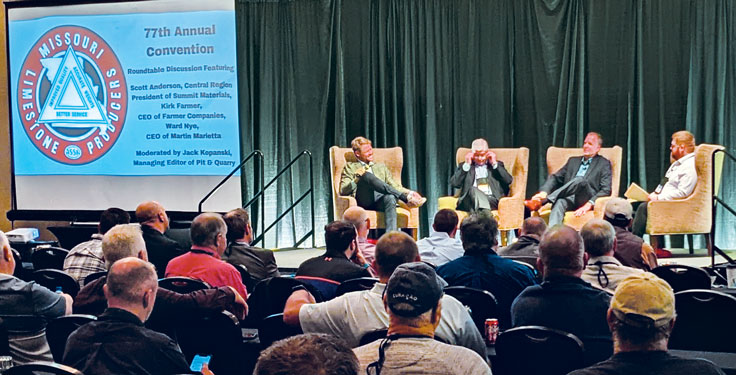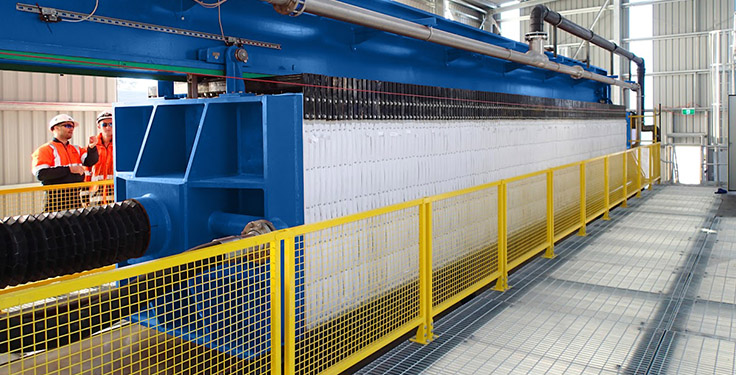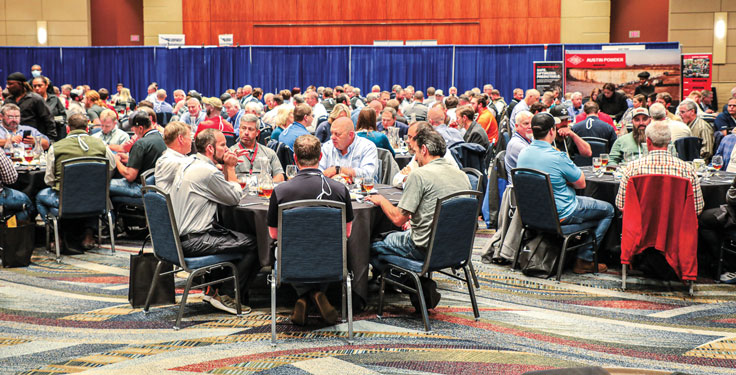P&Q: Sustainability has been a large focus in the industry of late. What does sustainability mean to your companies?
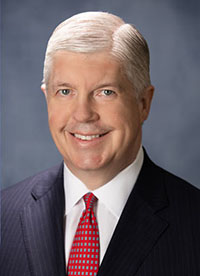
NYE: The stone business is actually a very good, clean business. What’s our primary pollutant? Dust. How do we typically fight dust? With high-pressure water sprays. What do we do in our operations? We have closed-loop systems that end up recirculating the water. And if and when we have a discharge, you’re discharging either pursuant to NPDES (National Pollutant Discharge Elimination System) parameters or an SPDES (State Pollutant Discharge Elimination System) permit.
Typically, you’re discharging something into a stream, river or tributary of something that’s relatively of drinking water quality.
When we have that conversation, we say: ‘Actually, from an environmental perspective, you would rather live next door to a quarry, in most instances, than you would to agricultural activities.’ In most instances, suddenly, you’ve changed the scheme of the conversation.
ANDERSON: In my region, we’ve taken the approach that we really want to focus on land reclamation. We really feel like we have a responsibility to return that land better than when we found it.
I love it when we take an old quarry and turn it into a wildlife habitat site, or we take an underground mine and turn it into a storage facility. We’re trying to see what good development uses are for the land and really get into our communities and see what they need. We’re trying to be a good, sustainable partner.
We’ve also equipped all of our vehicles with tracking systems so we can track the emissions of every one of our vehicles and engage our employees to take responsibility to help us reduce fuel and emissions.
FARMER: Sustainability takes on a completely different meaning as a private company compared to a public company that has that outsider ownership pressure. When I think of sustainability, I think of having a strong balance sheet and having a company that’s sustainable that can last generations.
What Ward said is true: We’re not that dirty of an industry, and we are building communities. As long as we’re focused on that, we are being sustainable.
I focus more on the economics of being sustainable than the environmental side, because I do think the environmental side takes care of itself.
P&Q: How do you feel the aggregate industry fits into the overall sustainability picture? Do you think the industry is a leader in that larger picture? If not, do you think it should be?
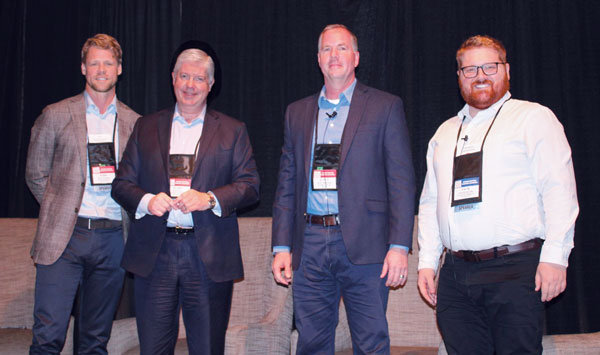
NYE: I think it will be. If we think about sustainable construction, the role that we’re going to have as an industry in that is going to be disproportionate. And we need to be able to tell that story.
The other thing we can do over time – and we’re seeing it now – is think about how our power sources are used. We burn over 10 million tires a year at our Midlothian cement plant. Tires are coming into that plant, we’ll shred those, pull the steel out and recycle the steel. We burn the tires at a very high temperature – and that’s 40 percent of the power to turn that kiln. That’s millions of tires a year that aren’t going to a landfill. That’s a good sustainability story.
ANDERSON: I think we are going to be, and I think we need to be a leader. It is very important that we look for opportunities on these land projects. But emissions? That’s a huge area. We’re already using hybrid loaders. I think we’re going to continue to expand into this area, and when the electric fleets start coming, I think we’re going to have to look at that.
P&Q: There is a lingering negative perception surrounding quarries. Is that a perception you’ve seen change? Are you as companies making an effort to get involved with the public and with your surrounding communities?
ANDERSON: Social media has kind of changed it for us. It’s amazing how these myths can go out there about a quarry when you’re getting ready to do a permit or renewal. We have to be very actively involved and engaged with our community leaders in dispelling those kinds of myths, showing them what the real quarry is.
One thing we’ve done that’s really helped us, too, is we’ve connected with our schools. I can’t tell you how many field trips we have to the quarries. Having those kids come out is special.
NYE: When we take city councils, county commissioners, members of Congress or somebody else through, they’re almost always surprised. Because what they think they’re going to see – and what they see – end up being two very different things.
Almost uniformly, my experience when we bring somebody in and show them a shot – which is usually the highlight of anybody’s visit – their comment is usually: ‘Is that it?’ What a wonderful comment to have because, suddenly, they’re recognizing these are very sophisticated operations.
The full roundtable discussion from the Missouri Limestone Producers Association’s 2022 Annual Convention can be found here.

